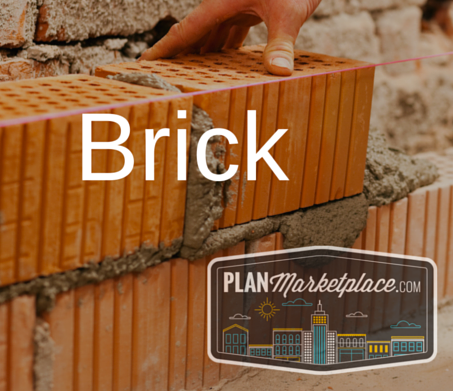
The first of our exterior finish material blogs, we wanted to start with the brick. We use it often on our residential and commercial projects. It is widely used today because of its timeless look, durable and low maintenance finish. Today we set out to answer some questions about brick and give you useful details for your next project. We use brick today almost exclusively in the US as a veneer system. So the brick is not structural, only used as a cover or finish material. The brick veneer is attached back to the structural wall. This wall can be a wood stud wall, metal stud wall, CMU wall or concrete wall. The details and information below are for a veneer brick assembly.
Read on for a link to our free set of Brick details!
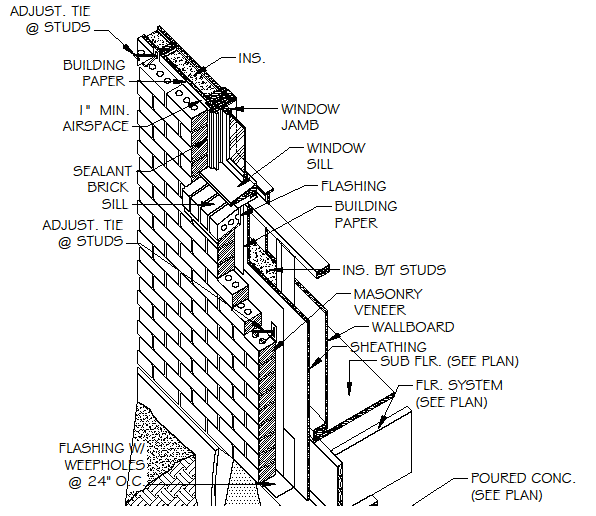
Brick ledge– Is it necessary and what size should it be? Brick veneer must have a brick ledge to support the brick. From the foundation this is done as part of the concrete footing. The brick ledge should be large enough for the full depth of the brick and be flush with the front edge. The brick ledge should also be set lower than the finish floor level. This is another way to ensure moisture does not enter the interior of the wall assembly. The size and shape of the brick ledge varies widely depending on the contractor. I have always shown them as 1 ½” x 5 ½” so it could be formed with a 2×6. I have on occasion lowered the brick for aesthetic purposes, so the exposed concrete foundation was minimal. These could be formed with wood, styrofoam or cardboard forms. The key is to have the drainage (weepholes) drain below the finish floor and above grade.
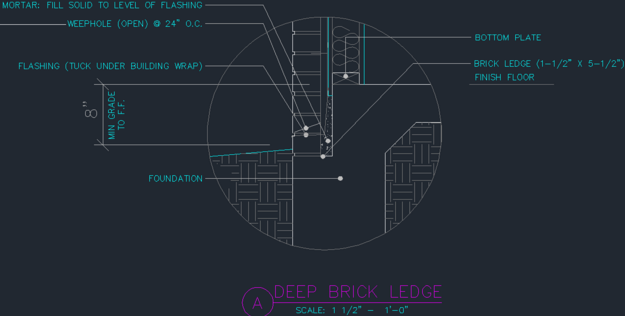
How often should weep holes occur? Weep holes should occur every 24” (between every 3 bricks) above all flashing courses. These should be clear of debris and mortar. If wicks are used, they should occur every 16” (between every 2 bricks).
How often should we put expansion joints? Expansion joints in a brick veneer wall should occur every 25’-0” maximum & within 10’-0” of corners and at any offsets or intersections.
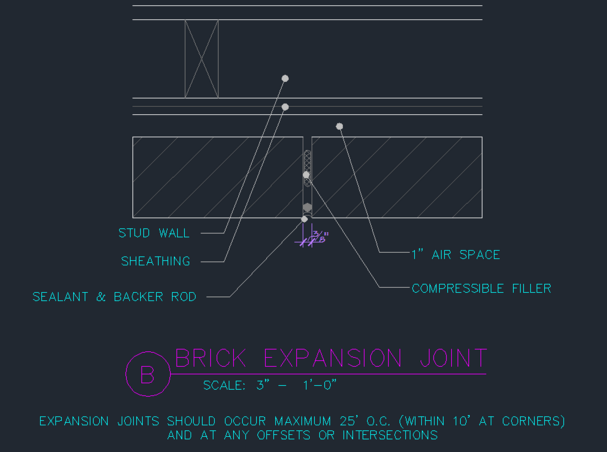
What type of tie should be used and how often should they occur? For residential, wood framed construction, corrugated metal strips can be used. For all other applications, wire anchors, adjustable anchors or joint reinforcement should be used. Typical tie spacing should be every 18” vertically and every 32” horizontally.
Should I go with a standard modular brick? This is the most common size of brick that everyone is accustomed to, however, there could be savings by choosing another size of brick. For example, king size brick could offer a significant savings over modular brick. Just be sure the look is what you want and the contractor can document the savings.
What about thin brick? Is this a reliable and cost effective alternative? The answer a majority of the time is no. Thin brick is more expensive than traditional brick (about 30% in my area) and is a different product that is installed completely differently. The look is similar, but that is about it. We have found the only time that we use thin brick is for retrofit situations when we don’t have and can’t add a brick ledge.
What are problems with brick and how do we avoid them? Brick itself, rarely, if ever has problems or fails. It is a fantastic building material. Problems occur when brick walls are not properly drained and retain moisture or water is allowed into the brick assembly. This moisture can remain in the wall cavity, eventually finding its way to the interior of the building or it can lead to efflorescence.
Quick facts:
R Value – 4” face brick is 0.44
STC – 4” face brick is 45
Costs for installation (including materials) – $6.50-$11.00 psf
Maintenance Required – Little to none
Life span – Long time (Some warranty for 100 years)
Difficult to install – No, common trade almost everywhere
Design options – Many colors, shapes and sizes available
Take a look at some of our new details:
Brick Veneer Wall with Wood Stud Detail
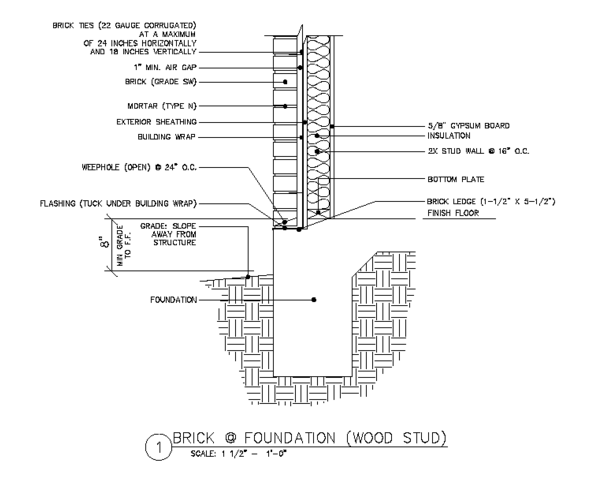
Need this detail? Get it (and all the others) Free!
Brick Veneer Wall with Metal Stud Detail
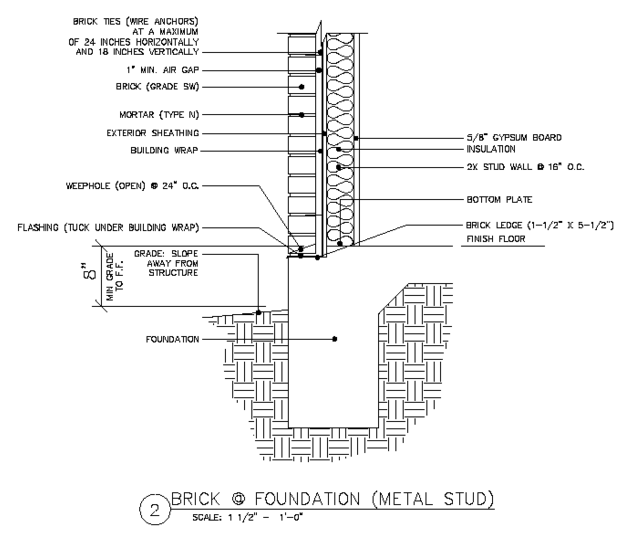
Need this detail? Get it (and all the others) Free!
Brick Veneer Wall with CMU Detail
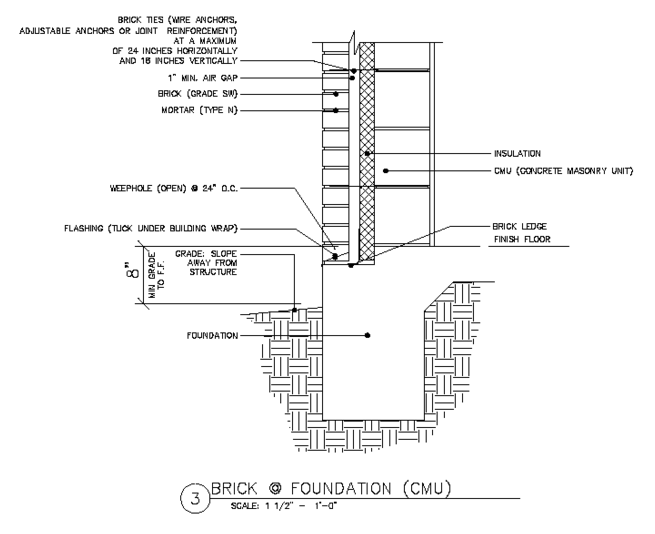
Need this detail? Get it (and all the others) Free!
Brick Veneer Wall at Steel Lintel
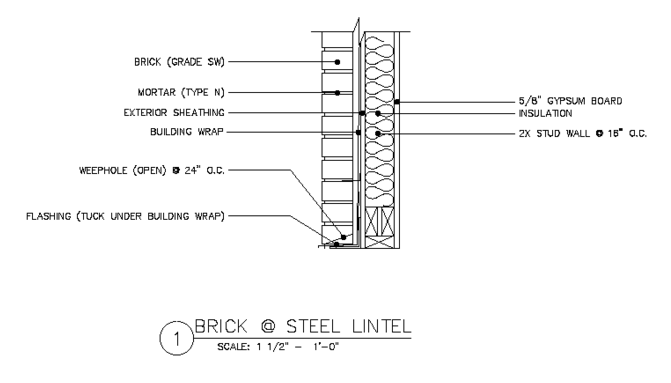
Need this detail? Get it (and all the others) Free!
Brick Veneer Wall with Deep Brick Ledge
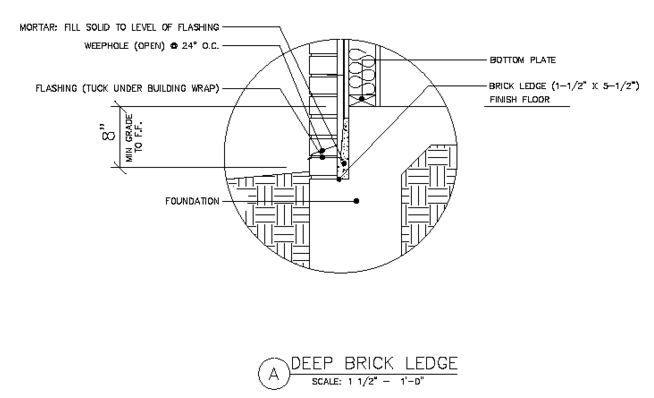
Need this detail? Get it (and all the others) Free!
Brick Expansion Joint
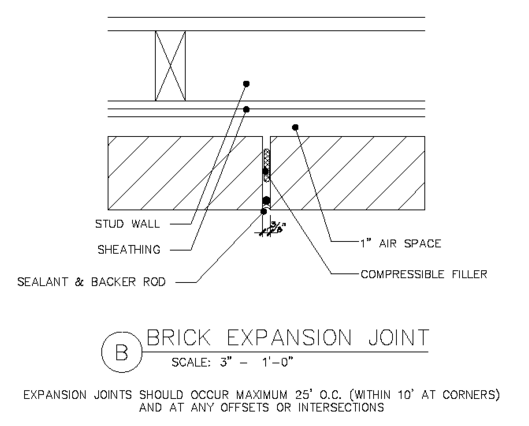
Need this detail? Get it (and all the others) Free!
Interested in brick details? Click on any of the details above to download them for free! We’re working hard to grow our library of details to comprehensively cover a wide range of industries or niches. We’d love you to buy and sell YOUR details on planmarketplace.com, why not become a member today?

[…] observation visits involve masonry sill flashing and window flashing. Here’s an example from plan marketplace detailing the correct masonry sill […]